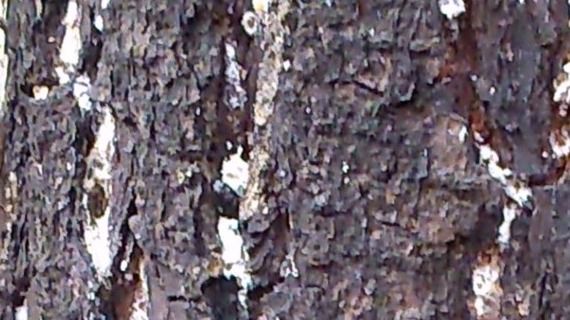
Giant pine scale
Current situation
Giant pine scale (Marchalina hellenica) is a scale insect that sucks the sap of pine trees. This scale insect is native to the eastern Mediterranean region, specifically Greece and Turkey. Excess sap is excreted from the scale as honeydew which ants and bees gather for food. In Greece the bees are farmed for this honeydew as it produces a specialty honey called pine honey.
Giant pine scale was recorded in Australia for the first time in November 2014 in metropolitan Melbourne and Adelaide. The Victorian and South Australian state departments of agriculture conducted surveillance and attempted to eradicate this pest. In 2016 it was nationally agreed that eradication of giant pine scale was not technically feasible.
New South Wales is free from this insect pest.
Notifiable status
Giant pine scale (Marchalina hellenica) is not a notifiable plant pest in NSW.
However, if you suspect giant pine scale:
- Call the Exotic Plant Pest Hotline 1800 084 881
- Email biosecurity@dpi.nsw.gov.au with a clear photo and your contact details
A full list of notifiable plant pests and diseases can be found in Schedule 2 of the NSW Biosecurity Act 2015.
Description
Adult giant pine scale is 7 to 11 mm long and 3 to 5 mm wide and is covered by a fluffy white waxy coat (Figure 2).
When giant pine scale is present in very large numbers on a pine tree the white waxy coat gives the appearance of snow (Figure 1).
Giant pine scale is harmless to people and pets.
What to look for
The most obvious sign of giant pine scale is the fluffy white wax covering which it produces. The wax is generally seen on the trunk and lower branches.
Host trees
In Australia giant pine scale has been found on Aleppo pine (Pinus halepensis) and on radiata pine also called Monterey pine (Pinus radiata).
Overseas, giant pine scale is found on pines (Pinus), firs (Abies) and spruces (Picea).
Damage
Heavy infestations of giant pine scale may result in defoliation of the host tree and eventual tree death.
Spread
Giant pine scale has low mobility and adults are wingless. Crawlers only move short distances on the host tree. Some local spread may occur by ants harvesting the eggs of giant pine scale.
Long distance spread is by human assisted movement of infested pine branches, needles and cones.
Distribution
Giant pine scale is native to pine forests in the eastern Mediterranean region, specifically Greece and Turkey.
Giant pine scale was found in metropolitan Melbourne and Adelaide in November 2014.
Giant pine scale is not present in New South Wales.
Image gallery
Released/reviewed: 3 April 2017







